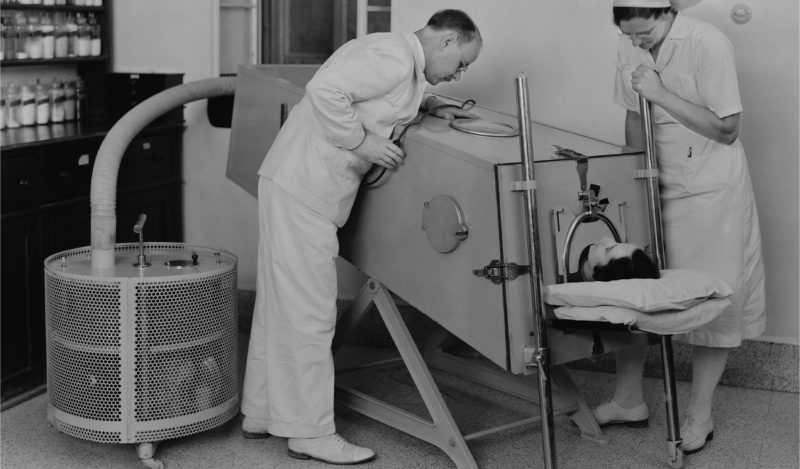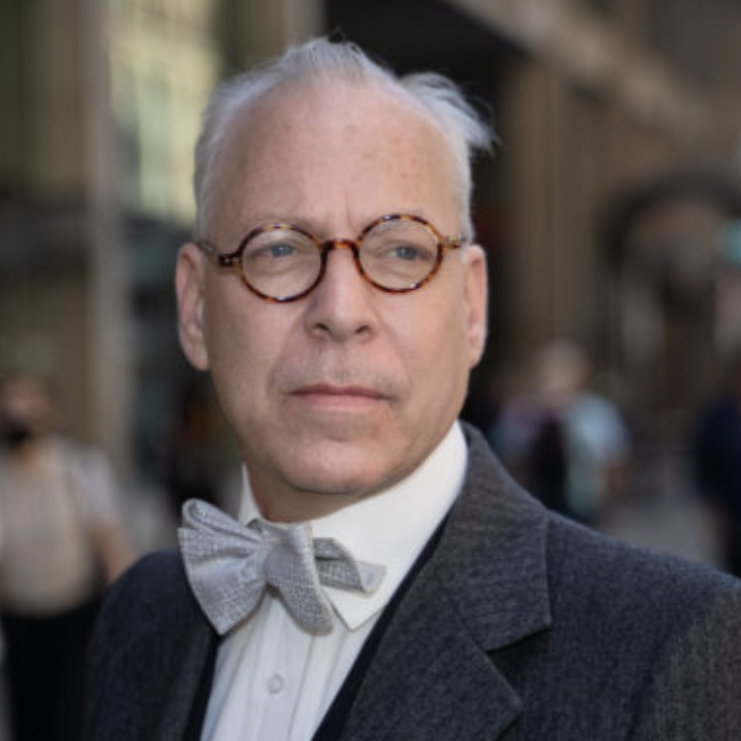World War II had ended four years earlier and the U.S. was trying to return to peace and prosperity. Price controls and rationing were ended. Trade was opening. People were returning to normal life. The economy started humming again. Optimism for the future was growing. Harry Truman became the symbol of a new normalcy. From Depression and war, society was on the mend.
As if to serve as a reminder that there were still threats to life and liberty present, an old enemy made its appearance: polio. It’s a disease with ancient origins, with its most terrifying effect, the paralysis of the lower extremities. It maimed children, killed adults, and struck enormous fear into everyone.
Polio is also a paradigmatic case that targeted and localized policy mitigations have worked in the past, but society-wide lockdowns have never been used before. They weren’t even considered as an option.
Polio was not an unknown disease: its reputation for cruelty was well earned. In the 1916 outbreak, there were 27,000 cases and more than 6,000 deaths due to polio in the United States, 2,000 of which were in New York City. After the war, people had living memories of this horror. People were also used to adjusting their behavior. In 1918, people left cities for resorts, movie theaters were closed for lack of customers, groups cancelled meetings, and public gatherings dwindled. Children avoided swimming pools and public water fountains, fearing that it was transmitted through water. Whatever the therapeutic merit of this, these actions required no force; it happened because people do their best to adapt to risk and be cautious.
In 1949, the new polio epidemic appeared and swept through selective population centers, leaving its most tragic sign: children with wheelchairs, crutches, leg braces, and deformed limbs. For children with polio in the late 1940s, the disease caused paralysis in 1 in 1,000 cases of children aged 5 to 9. The rest had only mild symptoms and developed immunities. In the 1952 season, of the 57,628 cases reported, 3,145 died and a shocking 21,269 experienced paralysis. So while the infection, death, and paralysis rates seem “low” by comparison to the 1918 flu, the psychological impact of this disease became its most prescient feature.
The “iron lung” that became widely available in the 1930s stopped asphyxiation of polio victims, and it was a triumph of innovation; it allowed a dramatic reduction in the death rate. Finally, by 1954, a vaccine was developed (by private labs with very little government support subsidies) and the disease was largely eradicated in the U.S. twenty years later. It became a signature achievement of the medical industry and the promise of vaccines.
Here is the data on infection and death.
Throughout the country, the quarantining of the sick was deployed in a limited way as one medical response. There were some shutdowns. The CDC reports that “travel and commerce between affected cities were sometimes restricted [by local officials]. Public health officials imposed quarantines (used to separate and restrict the movement of well people who may have been exposed to a contagious disease to see if they become ill) on homes and towns where polio cases were diagnosed.”
President Harry Truman spoke frequently about the need for a national mobilization against polio. But what he meant by this was to rally people to be cautious, follow medical guidelines, isolate the infected, and get the medical community inspired to find means of treatment and cure.
Though there was no cure, and no vaccine, there was a long incubation period before symptoms would reveal themselves, and while there was a great deal of confusion about how it was transmitted, the thought of locking down an entire state, nation, or world was inconceivable. The concept of a universal “shelter in place” order was nowhere imaginable. Efforts to impose “social distancing” were selective and voluntary.
In an earlier 1937 outbreak in Chicago, for example, the superintendent of schools (not the mayor or governor) closed the public schools for three weeks and encouraged learning from home. In many localities, when there was an outbreak and depending on the level of fear, bowling alleys and movie theaters were closed, but not by force). Church services were cancelled sporadically, but not by force. The churches themselves were never shuttered.
In Minnesota in 1948, the state board of health cautioned against going ahead with the state fair. It was cancelled. In 1950, James Magrath, president of the Minnesota state board of health warned against large gatherings, and regretted how much people persisted in gatherings of children, but added: “Nobody can shut down intercourse of people in communities… We will just have to say, ‘Do everything you can within reason.’ You can’t close up everything…”
In May 1949, after an outbreak in San Angelo, Texas (my father remembers this), the city council voted (voted!) to close all indoor meeting places for one week, according to the wonderful book Polio: An American Story by David M. Oshinsky, with a promised ending period.
But the local epidemic didn’t pass that quickly, and by June hospitals were filled with patients. Tourism stopped because people didn’t want to be there. Cleaning fanaticism was the rule of the day. Most indoor theaters and bowling alleys stayed closed simply because people were afraid (no evidence of any prosecutions). In the end, writes Oshinsky, “San Angelo saw 420 cases, one for every 124 inhabitants, of whom 84 were permanently paralyzed and 28 died.”
And by August, polio was gone again. Life in San Angelo gradually returned to normal.
This experience repeated itself in most places in the country where there were outbreaks. City councils would encourage the following of the directives of the National Foundation for Infantile Paralysis (later the March of Dimes), which circulated a list of “polio precautions” for parents to follow. Some towns and cities across the United States tried to prevent the spread of polio by closing swimming pools, libraries, and movie theaters (not restaurants or barber shops) on a temporary basis but mostly in a way consistent with the public mood stemming from fear and confusion.
The only protests against authorities in a half-century of confusion came in New York when it seemed in the 1910s that authorities were targeting immigrant children with a burdensome demand that they be polio-free before integrating themselves into the community. “If you report any more of our babies to the Board of Health,” wrote the Italian Black Hand in blood, “we will kill you.”
What’s remarkable in light of the near-global coercive lockdown for COVID-19 is how the terrible and terrifying disease of polio was managed almost entirely by a private and voluntary system of health professionals, innovators, parental responsibility, localized caution, and individual volition and caution where needed. It was an imperfect system because the virus was so vicious, cruel, and random. But precisely because there were no national or state lockdowns – and only very limited local closures done mostly in a way consistent with citizen fear – the system remained adaptive to changing conditions.
Meanwhile, Guys and Dolls and The King and I appeared on Broadway, A Streetcar Named Desire and African Queen rocked the movie theaters, the steel mills hummed as never before, the oil industry boomed, domestic and international travel continued to roar and become democratized, the civil rights movement was born, and the “golden age of American capitalism” took root, all in the thick of a terrible disease.
This was a time when, even for this ghastly disease that maimed innocent young children, medical problems were widely seen to have medical solutions and not political ones.
Yes, there were clear policy responses to these past pandemics, but they targeted the most vulnerable populations to keep them safe, while leaving everyone else alone. Polio was especially bad for school children, but that meant they closed the schools temporarily, in cooperation with parents and the community.
The current pandemic is different because, instead of targeting the vulnerable populations, we’ve gone for society-wide one size fits all at nearly the national and global level, and certainly the state level. That’s never happened – not with polio, not with the Spanish flu, the 1957 flu, the 1968 flu, or anything else.
As the health official quote above said of the polio epidemic: “Nobody can shut down intercourse of people in communities.” Our rights survived. So did human liberty, free enterprise, the Bill of Rights, jobs, and the American way of life. And then polio was eventually eradicated.
The slogan for polio eradication – “Do everything you can within reason” – seems like a good rule of thumb for the management of future pandemics.
This is excerpted from the author’s book.
Join the conversation:


Published under a Creative Commons Attribution 4.0 International License
For reprints, please set the canonical link back to the original Brownstone Institute Article and Author.









